Golden Gate Bridge
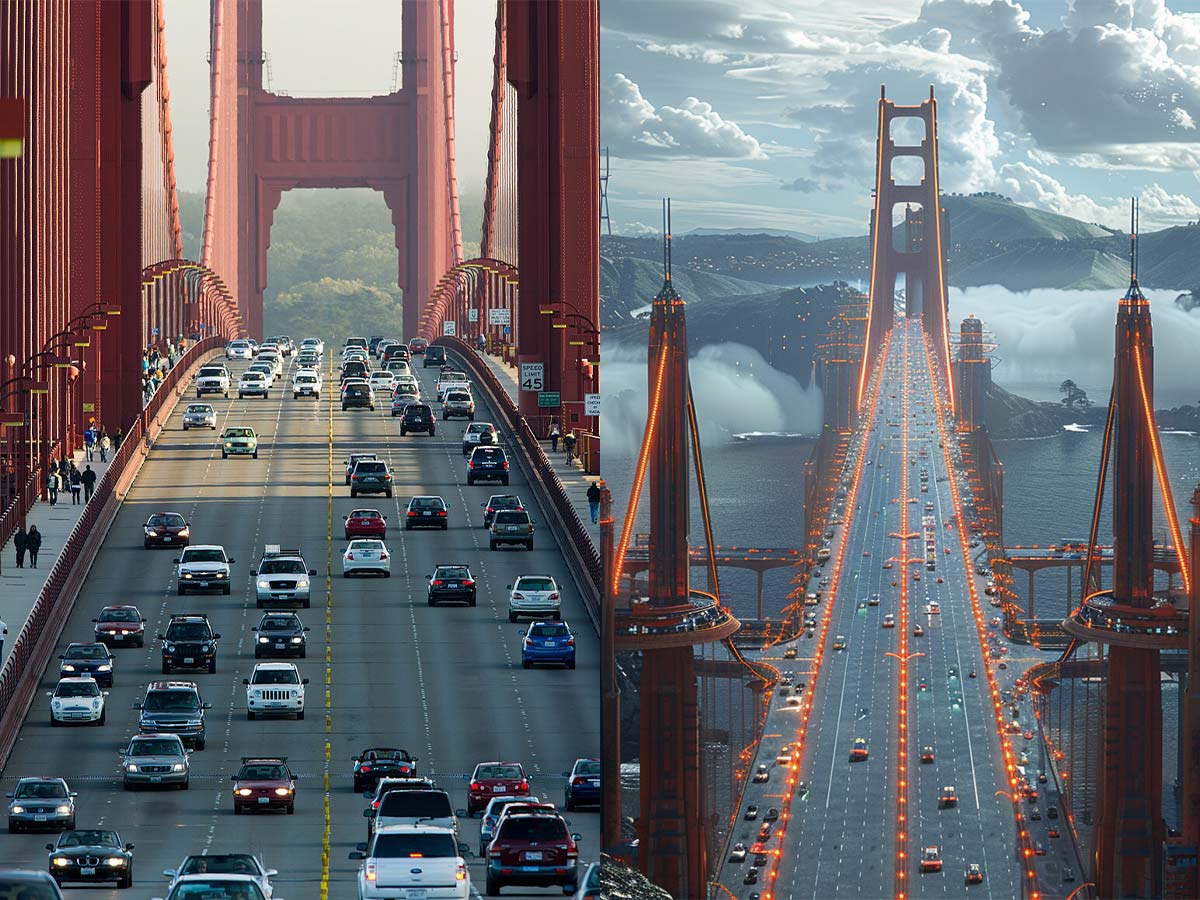
The Golden Gate Bridge, an iconic landmark in San Francisco, has stood for over 80 years. However, as technology advances and the Bay Area continues to evolve, the future of this bridge might hold some interesting changes.
Traffic congestion is a constant battle on the bridge. The future might bring a more intelligent traffic management system. Sensors embedded in the roadway could monitor traffic flow in real time and adjust speed limits or lane designations to optimize traffic flow.
i-405

The infamous I-405 in California, notorious for its soul-crushing gridlock, could undergo a radical transformation in the future, embracing innovative technologies to become a model for efficient and sustainable urban transportation.
Imagine a dynamic network of modular roadways. These adaptable road segments could be easily shifted and reconfigured, allowing for seamless construction and maintenance without the usual lane closures and traffic nightmares. This modular design would significantly reduce construction times and minimize disruptions to daily commutes.
Brooklyn Bridge
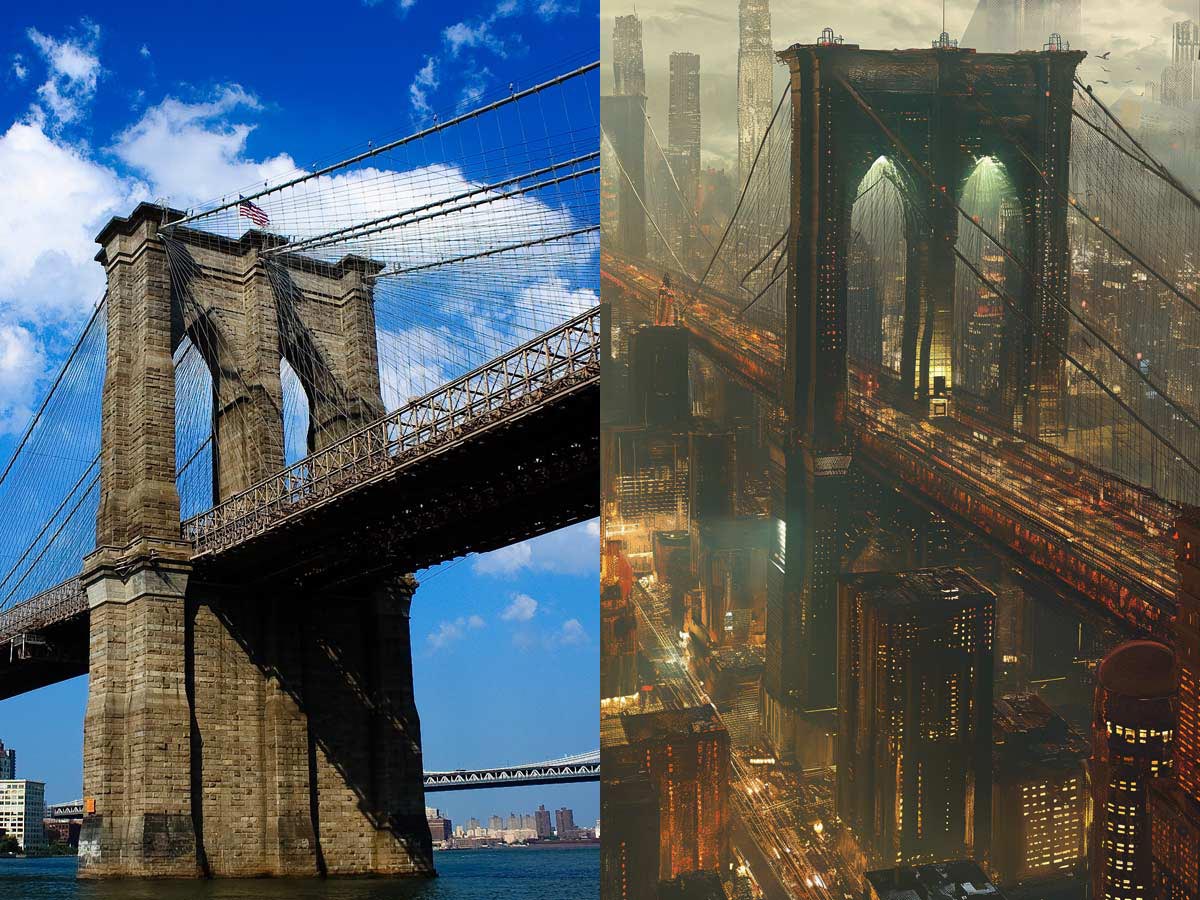
The Brooklyn Bridge, a majestic steel suspension bridge, stretches across the East River, connecting Manhattan to Brooklyn. Completed in 1883, the bridge once held the record for having the longest suspension span. Its iconic neo-Gothic towers have become an iconic landmark in New York City.
In the future, the Brooklyn Bridge might boast a solar makeover, generating its own power. Self-driving cars could navigate a dedicated lane, while cyclists zoom on elevated paths. As Brooklyn transforms into a metropolis of the future, surely we’ll see its iconic bridge transform as well.
Wall Street

Wall Street, a narrow lane in Lower Manhattan, embodies the fast-paced world of finance and its global influence. Its imposing skyscrapers house banks, investment firms, and the iconic New York Stock Exchange.
AI could become an indispensable tool for Wall Street in the future, utilizing vast datasets to identify market trends, assess risks, and even guide investment strategies. Algorithmic trading platforms might become commonplace, with AI enabling data-driven trading based on complex calculations.
Route 66
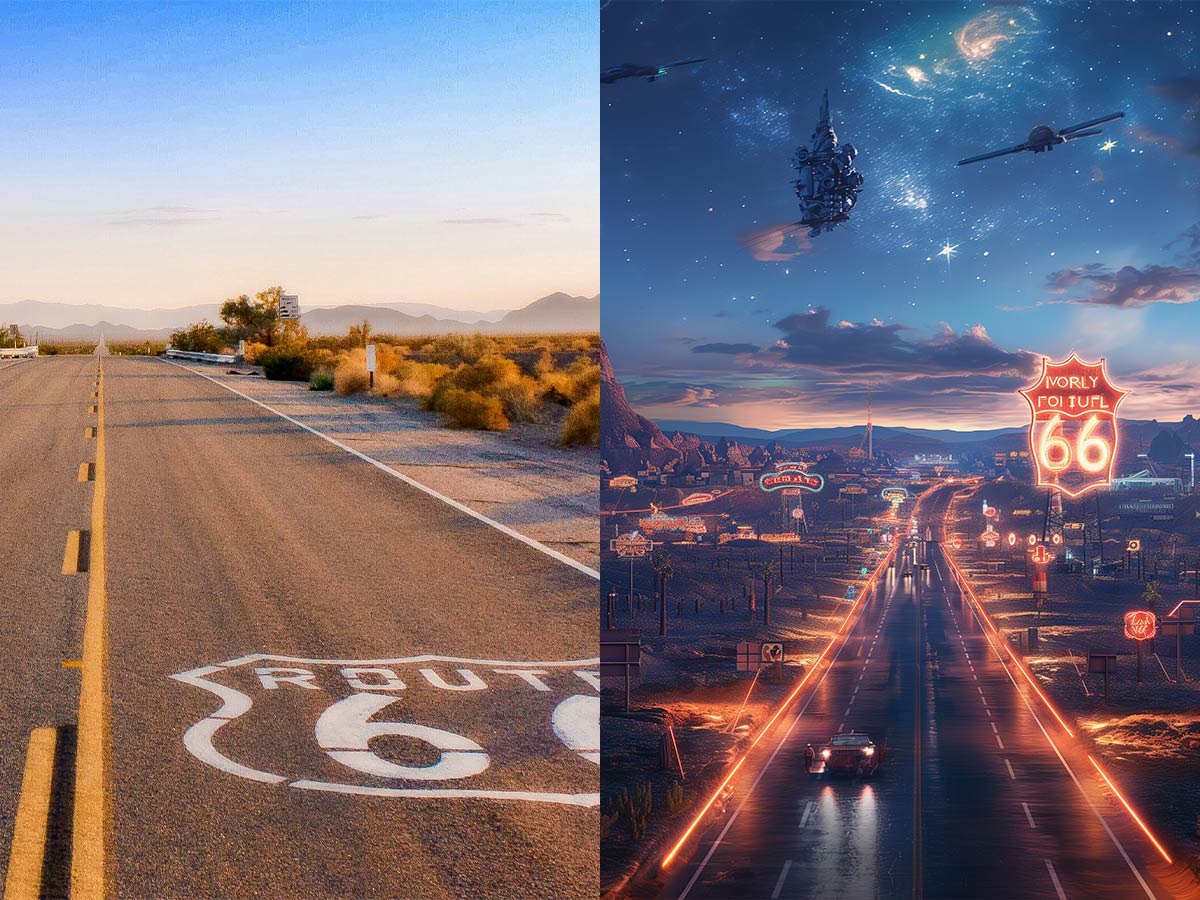
Route 66, the iconic "Mother Road," might be a relic of the past, but its spirit of adventure and exploration is far from dead. As travel trends evolve and sustainability becomes a priority, Route 66 could see a revival in the future, but with a modern twist.
In the future, as we move into the EV revolution, we might see electric vehicle charging stations strategically placed along the route. Historic gas stations could be transformed into charging hubs and rest stops, preserving the nostalgia while embracing new technology.
Pacific Coast Highway

The Pacific Coast Highway (PCH), also known as California State Route 1, is more than just a road. Stretching for over 650 miles, the PCH winds its way through charming beach towns, past towering cliffs, and offers unparalleled views of the Pacific Ocean.
Imagine cruising down a future Pacific Coast Highway adorned with solar panels strategically placed along the guardrails, silently generating clean energy to power electric vehicle charging stations and highway lighting.
State Route 520 Floating Bridge

Today, the State Route 520 Floating Bridge, stretching across Lake Washington, serves as a vital artery for Seattle traffic. This engineering marvel, opened in 2016, uses pontoons to stay afloat, making it the world's longest floating bridge. However, heavy traffic volumes and the ever-present battle against congestion paint a picture of a roadway constantly pushed to its limits.
Looking 100 years into the future, the 520 bridge could undergo a dramatic transformation. With advancements in sustainable technology and a growing focus on alternative transportation, the bridge might see a significant shift in how it functions.
Royal Gorge Bridge

To accommodate an ever-growing population, structures like the Royal Gorge Bridge could be expanded to support vehicular traffic in the area. As technology improves and new energy sources become a reality, places like this could be turned into inhabitable towns or cities.
Centuries after its construction, the Royal Gorge Bridge continues to inspire awe. This image showcases a potential future where the bridge integrates seamlessly with sustainable technologies.
Million Dollar Highway
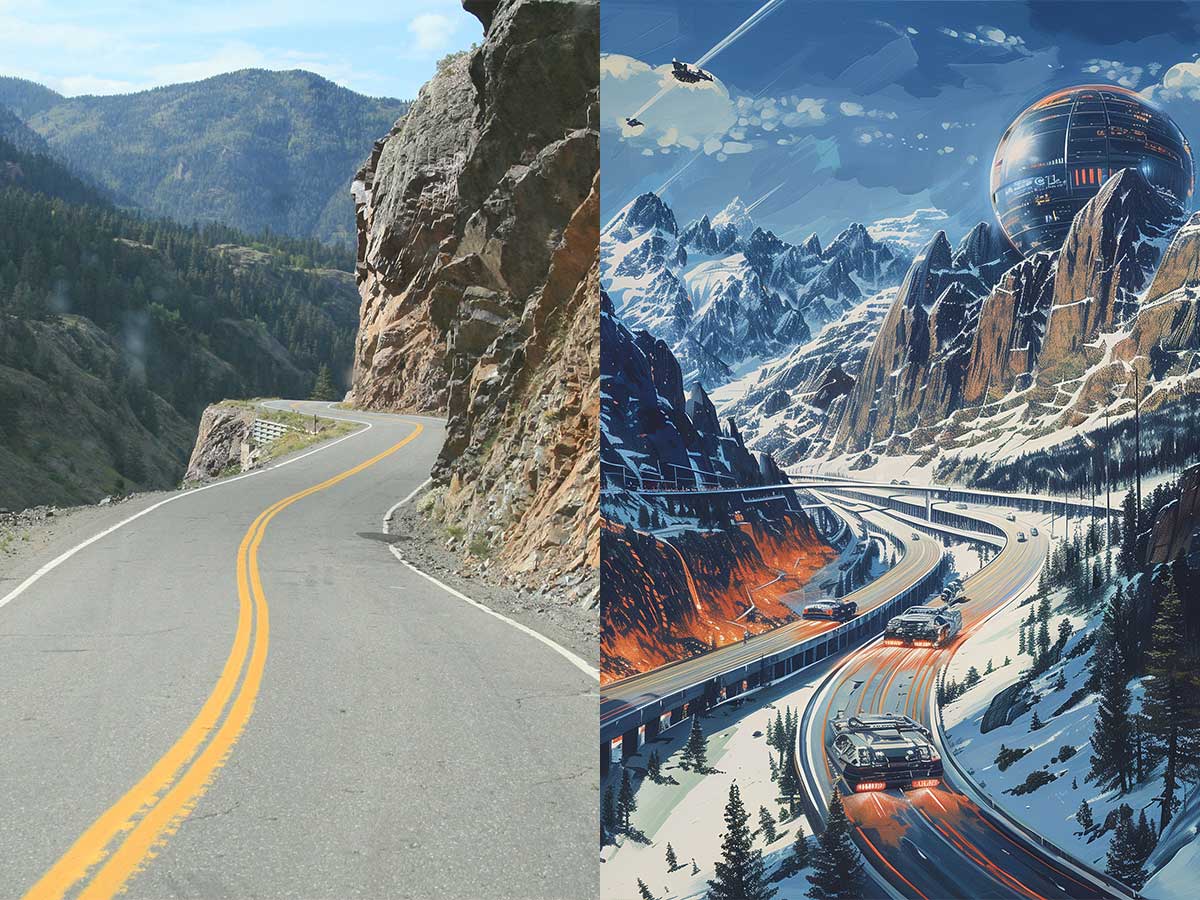
The Million Dollar Highway, a ribbon of asphalt that winds through the heart of Colorado's San Juan Mountains, could undergo a dramatic transformation as we hurtle toward the future.
Hundreds of years into the future, we might finally see skies above the highway could be dotted with flying cars surrounded by powered by fusion reactors that produce cleaner energy.
Overseas Highway

Nicknamed the "Highway that Goes to Sea," Florida's Overseas Highway winds for 113 miles through a turquoise paradise, connecting mainland Florida to the vibrant Florida Keys.
This image of the future showcases an elevated roadway, possibly inspired by the current stilted design of the Overseas Highway. This elevated design could offer several advantages. It could provide unobstructed panoramic views for travelers, protect the fragile coastal ecosystem from road runoff, and be more resilient in the face of rising sea levels due to climate change.
Sunshine Skyway Bridge
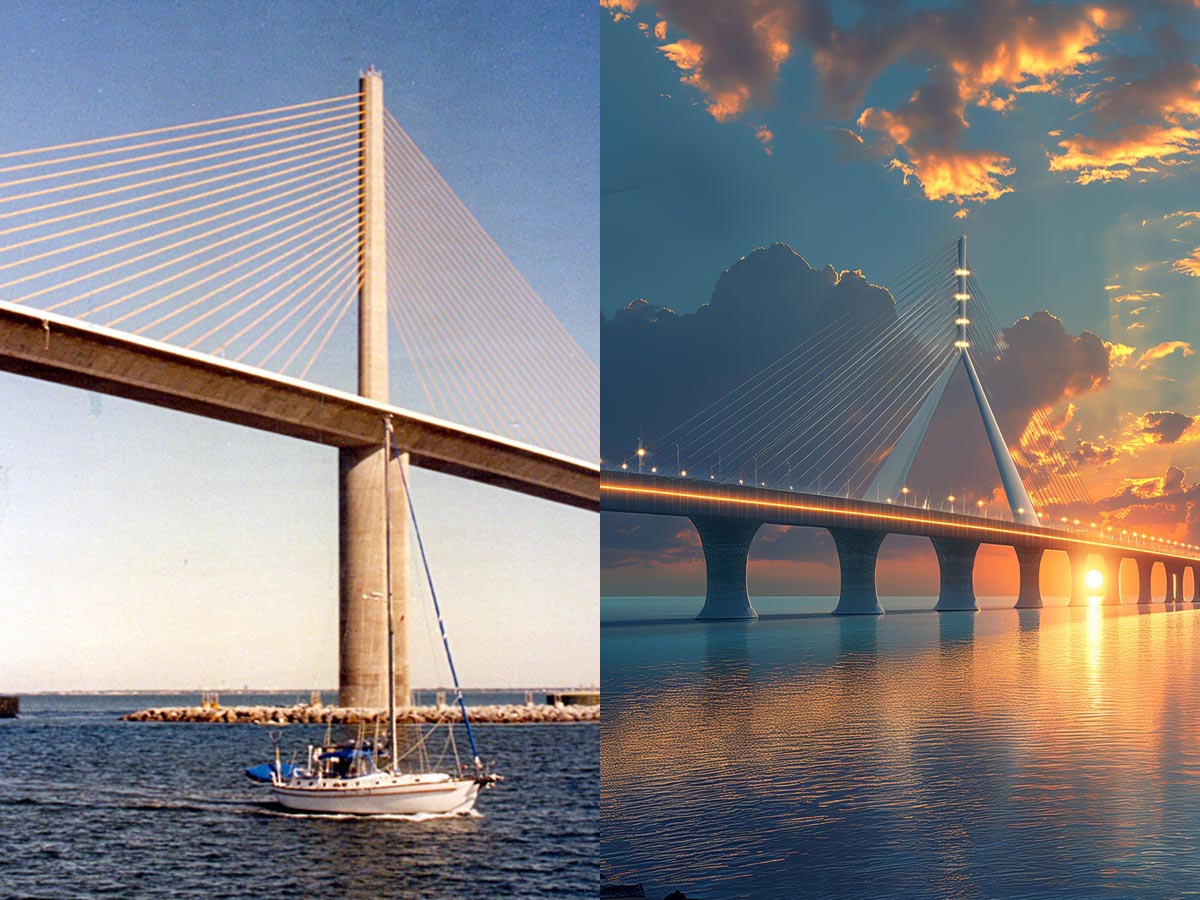
The Sunshine Skyway Bridge runs across Tampa Bay, Florida. Constructed in 1982, its sturdy precast concrete segments replaced a bridge tragically destroyed by a freighter collision. Motorists taking this route enjoy its panoramic view of the water.
Sunshine Skyway Bridge could eventually become an expressway for efficient traffic flow. We might see monitored traffic, regulated speed limits, and dedicated lanes for different types of vehicles.
Hana Highway

The Hana Highway in Maui isn't just a road, it's an adventure. Winding for over 64 miles along the eastern coast, it allows travelers to take in Hawaii’s natural beauty.
The Hana Highway of the future wouldn't erase its charm as a scenic escape. Its lush rainforests cascading waterfalls, and hidden beaches would remain the stars of the show. However, the integrated sustainable transportation options, and eco-friendly technology would elevate the experience, allowing visitors to connect with nature in a responsible way and ensuring the Hana Highway remains a pristine paradise for generations to come.
Pennsylvania Avenue
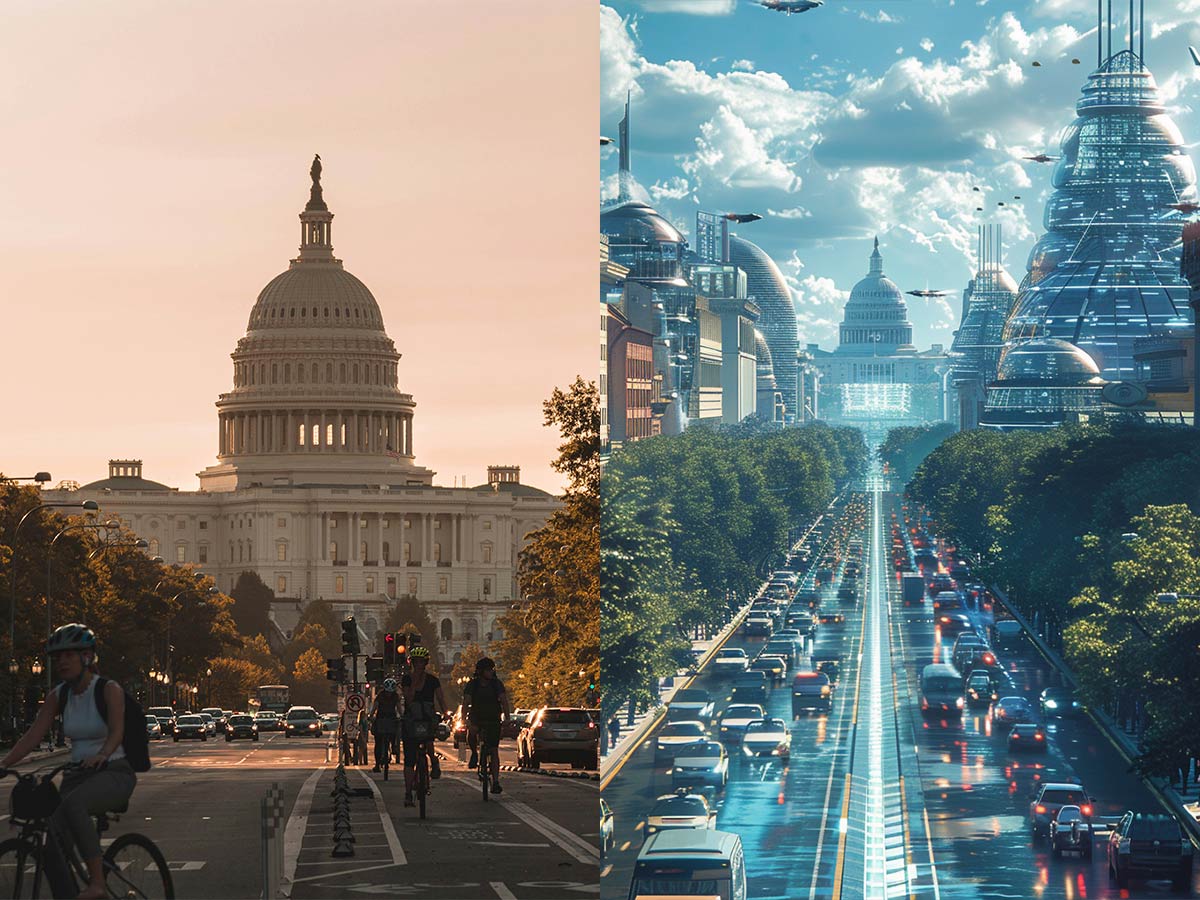
Pennsylvania Avenue today bustles with official vehicles, tourists snapping photos, and the weight of history. Grand buildings clad in marble line the route, a testament to American power.
With advancements in technology, the future of Pennsylvania Avenue and the city of DC as a whole will showcase that power further with advanced construction, new means of aerial travel, and sustainable energy sources, all monitored closely by national security, as we navigate the exciting and frightening future ahead.
Pan-American Highway

The Pan-American Highway, a dream of a unified road connecting North and South America, remains tantalizingly incomplete due to the formidable Darién Gap. However, as technology and environmental consciousness evolve, the future of this iconic route could see some improvements.
As other parts of America transform from bustling metropolises to futuristic cityscapes, AI imagines a future where vehicles are cruising along a multi-layered highway. Soaring above a neon-lit cityscape, this elevated highway showcases a future where traffic congestion is a thing of the past.
Atlantic Road Norway
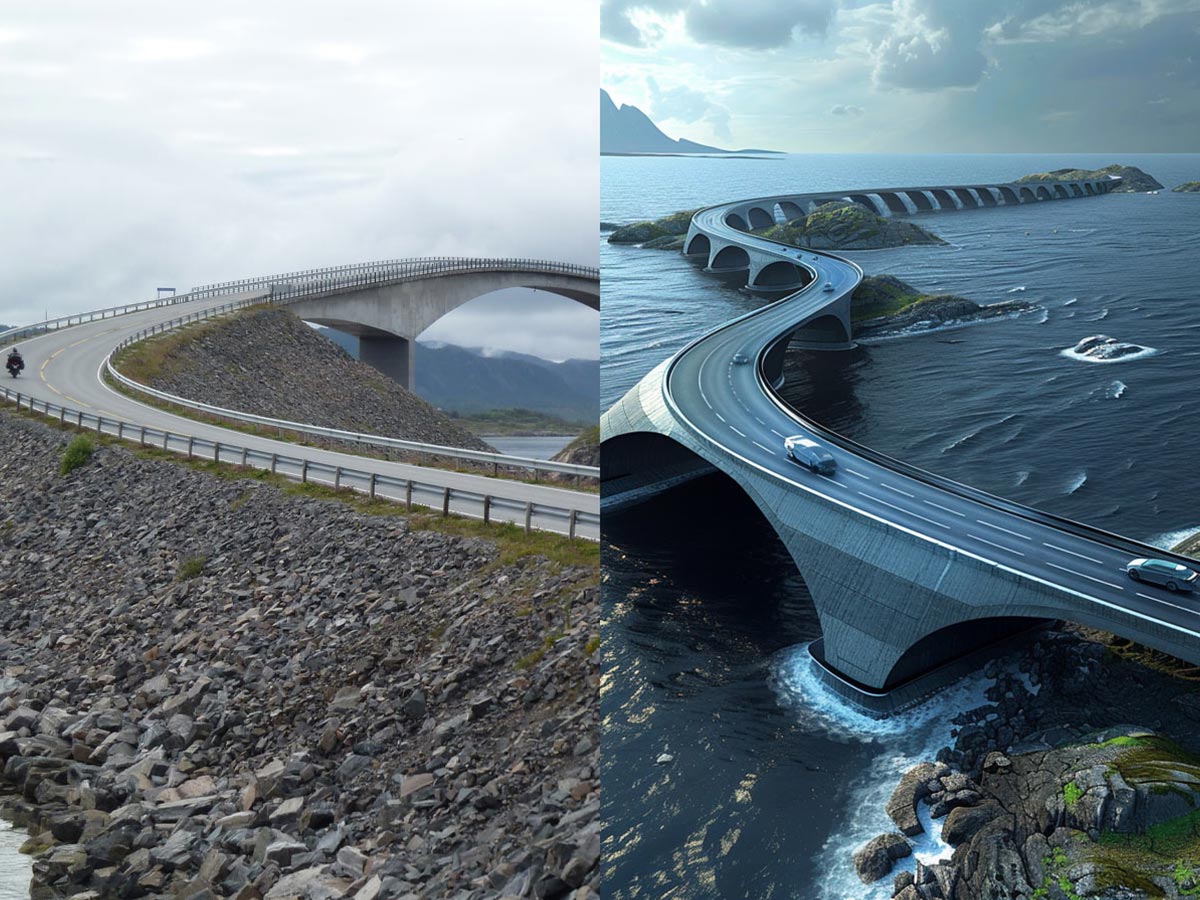
The Atlantic Road winds dramatically across several small islands along Norway's west coast. Completed in 1989, it's known for its iconic "humpbacked bridges" that seem to defy gravity. Tourists and locals alike marvel at the breathtaking coastal vistas as they navigate this unique route.
However, the road happens to be one of the most dangerous in the world and in need of a serious upgrade. Here’s what one possible upgrade might look like going into the future.
Sydney Harbour Bridge
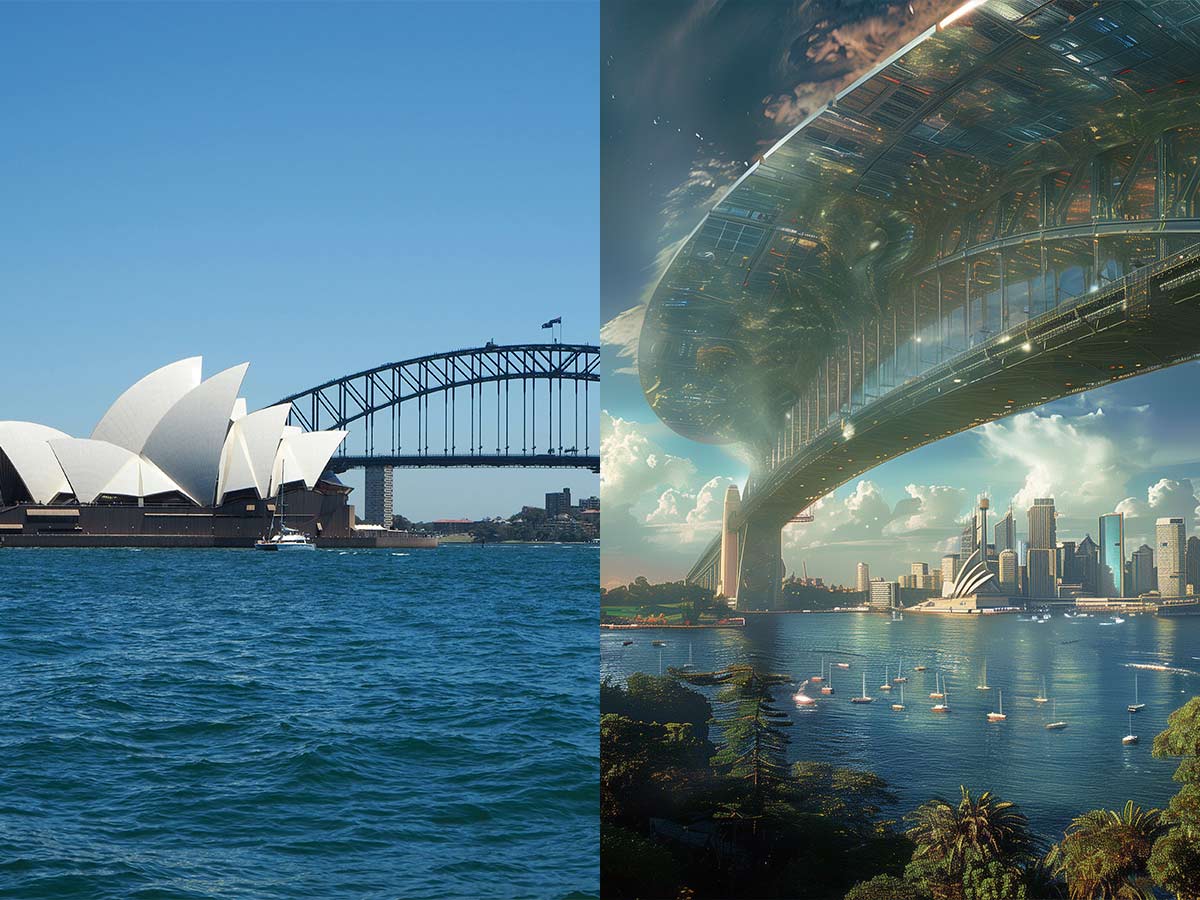
Sydney Harbour Bridge, a majestic steel sentinel, has stood as a symbol of Sydney for nearly a century. As technology advances and Sydney grapples with growing sustainability concerns, this iconic landmark might evolve in some interesting ways.
The bridge's current lighting system consumes a significant amount of energy. The future might see the bridge adorned with solar panels strategically placed to harvest energy and power not just its own lighting but also contribute to the city's grid.
Tasman Bridge
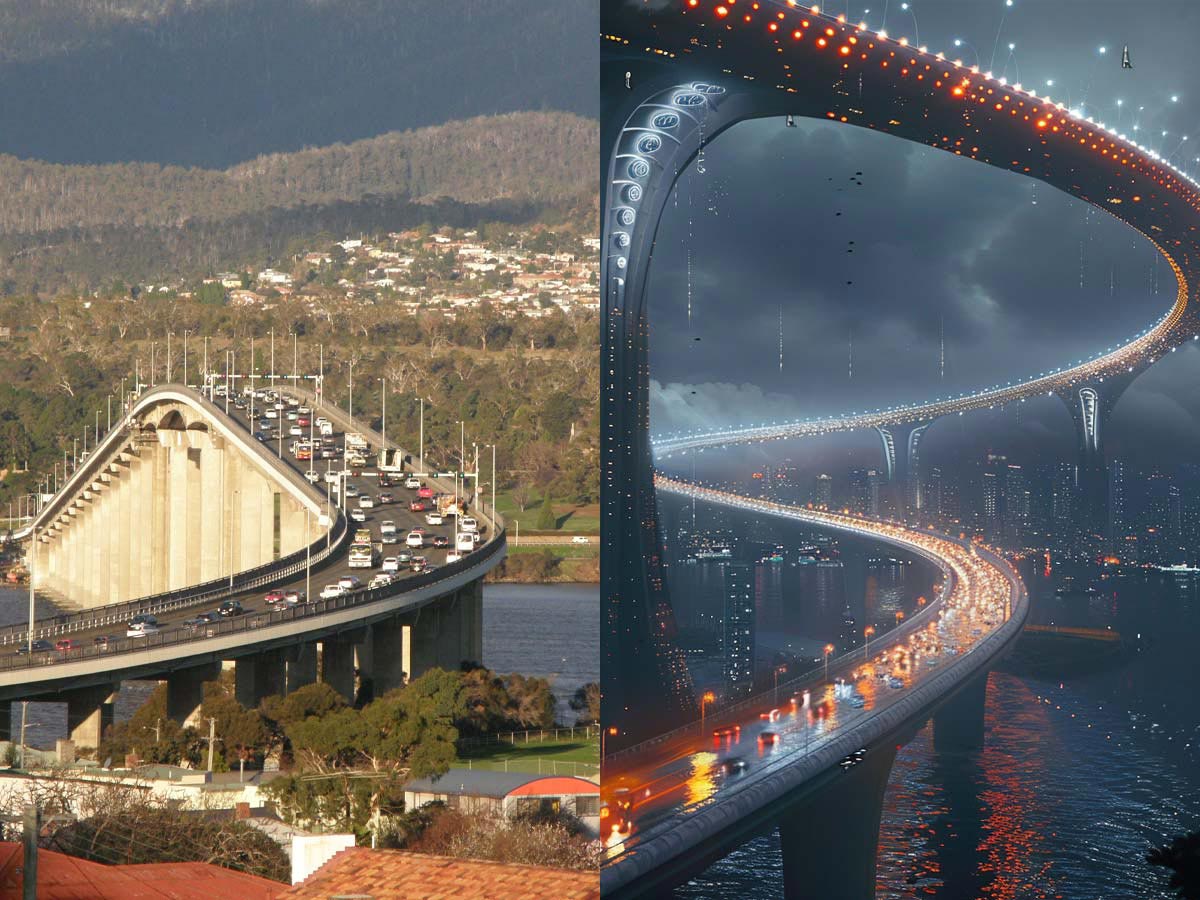
The Tasman Bridge stretches across the Derwent River, connecting Hobart, Australia's central business district, and its eastern shore. Completed in 1964, its graceful concrete arch design allowed uninterrupted shipping traffic on the busy river below.
In the future, the Tasman Bridge could be a testament to sustainable infrastructure embedded with solar panels. Meanwhile, it could allow for more drivers than ever before. Its underwater lighting displays could transform the bridge into a vibrant public artwork at night, attracting tourists and locals alike.
Helix Bridge
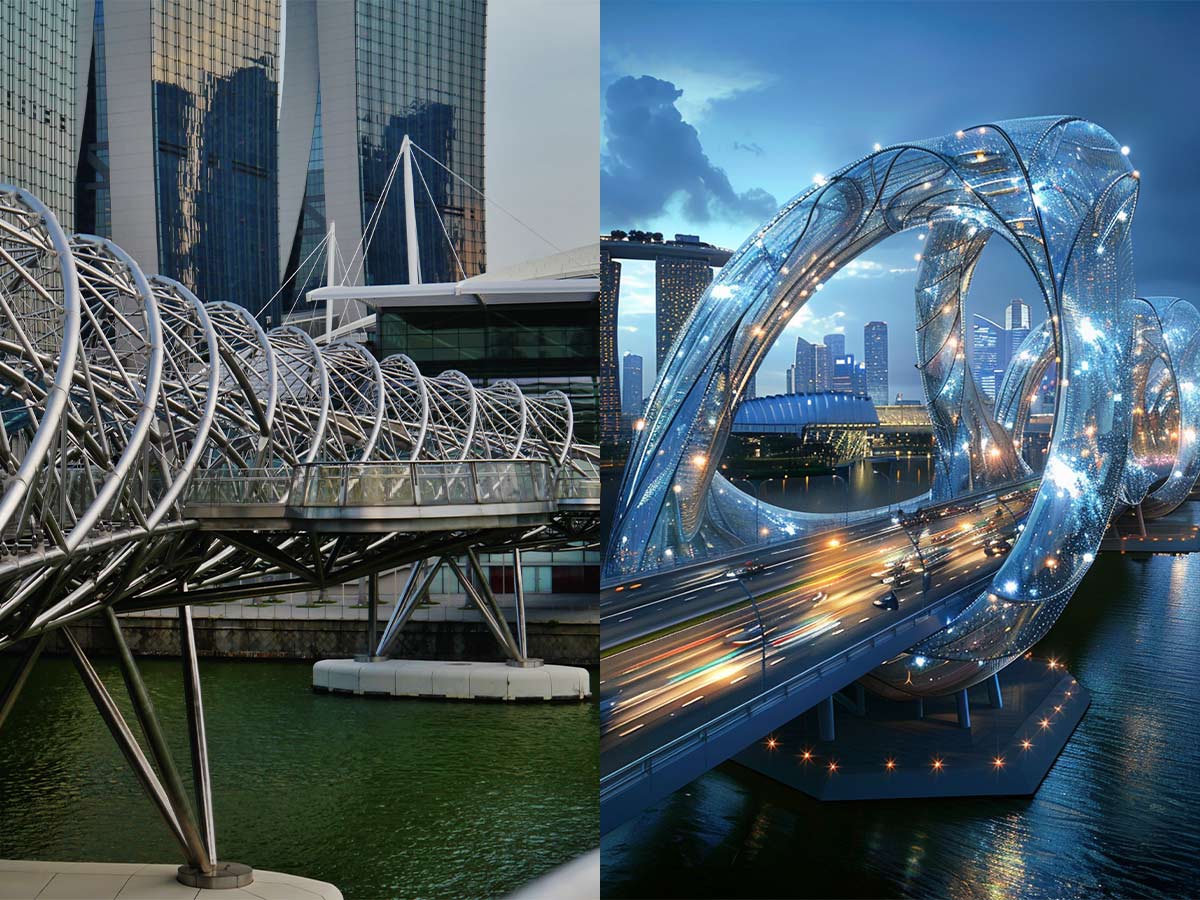
The Helix Bridge in Singapore, with its graceful double helix design, is largely used by pedestrians and cyclists. However, according to AI, the future could see this bridge or a new bridge with a similar design, constructed as a highway for sustainable vehicles.
The iconic double helix design offers a unique opportunity for sustainable integration. Solar panels could be incorporated throughout the bridge's structure, harnessing the sun's energy to power not just the bridge's operations but also contribute to Singapore's clean energy grid.
Nanpu Bridge

The Nanpu Bridge, a cable-stayed giant soaring over Shanghai's Huangpu River, stands as an iconic location within the city’s infrastructure. Inevitably, changes will be made in the future to accommodate the city’s needs and growing population.
As the city moves towards the endless possibilities of future transportation, dedicated lanes for autonomous vehicles, monorails, and whatever else the city may need, the bridge’s design may shift dramatically, working to improve the flow of traffic in the bustling cityscape.
Tower Bridge
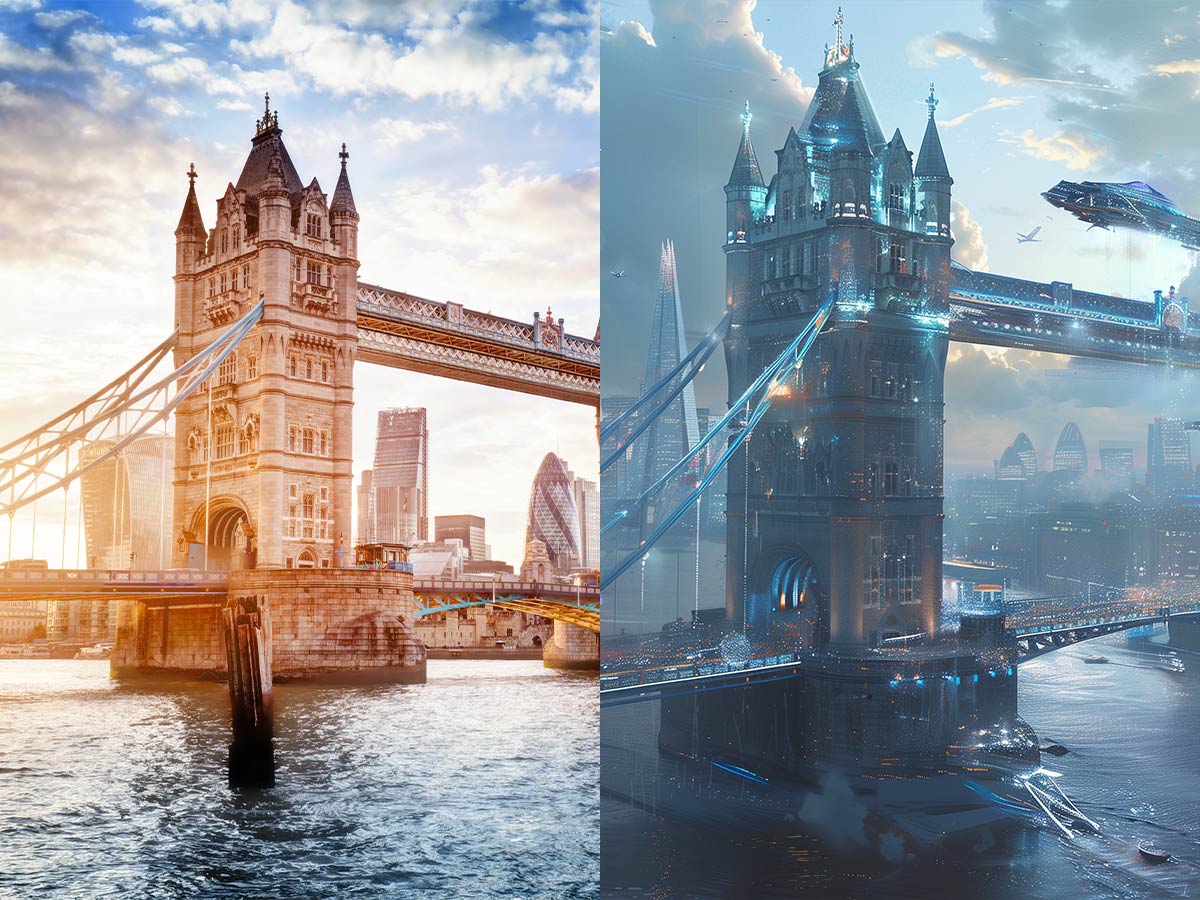
Tower Bridge, a London landmark gracing the River Thames since 1894, is a marvel of Victorian engineering. A popular tourist destination, Tower Bridge offers stunning panoramic views of the city from its high-level walkways and a glimpse into the bridge's fascinating history through its Victorian Engine Rooms.
. The bridge's exterior could be clad in self-cleaning, solar-powered panels, generating clean energy to illuminate the surrounding area. Despite the potential changes, Tower Bridge's iconic silhouette and historical significance would likely remain a cherished landmark.
Millenium Bridge
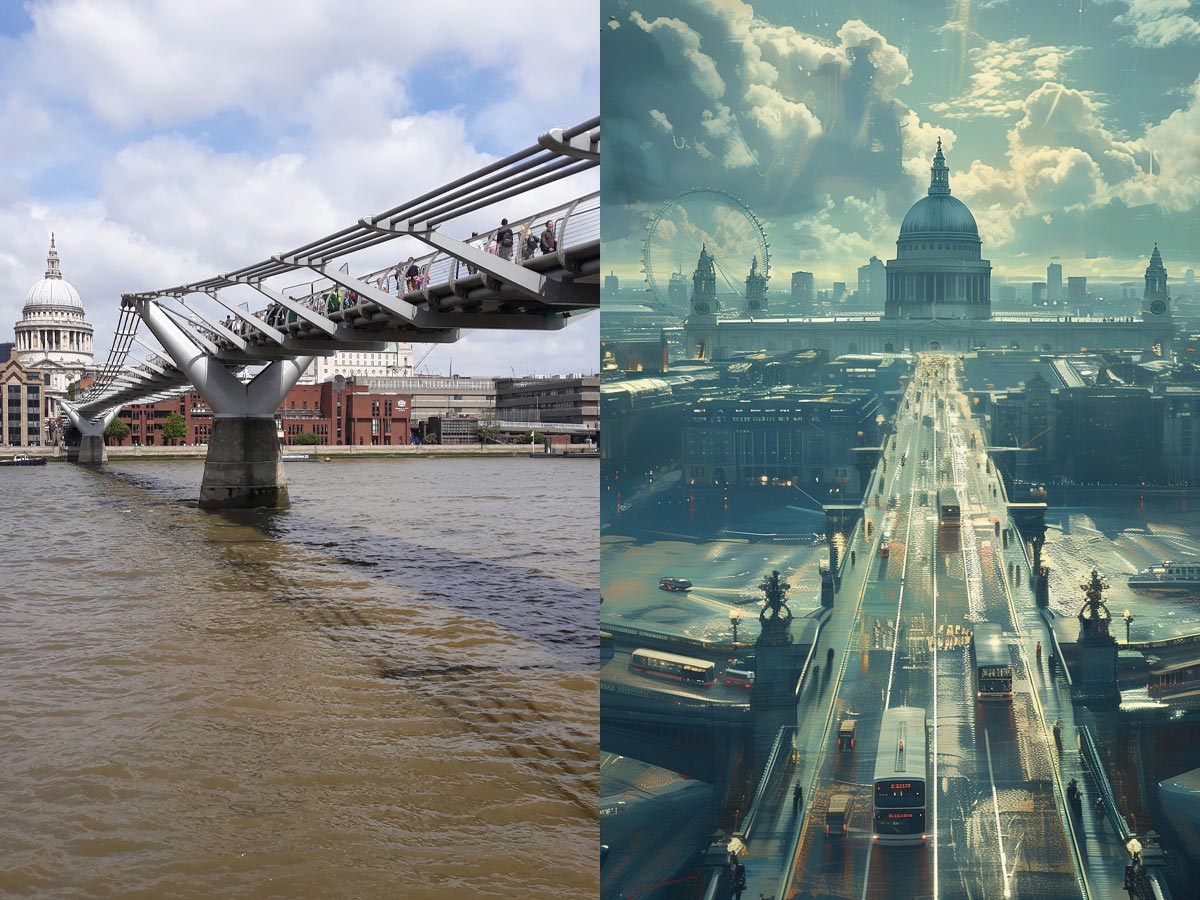
London's Millennium Bridge, currently used by pedestrians, stretches elegantly across the River Thames. Completed in 2000, its sleek, futuristic design incorporates steel suspension elements and a distinctive tilting mechanism for river traffic. Tourists and locals alike flock to this landmark for its breathtaking city views.
In the future we might see Millenium Bridge transform into something more, accommodating various forms of transportation, carrying busy bystanders across the water in the most efficient ways possible.
Tunnels Under London

London, a city steeped in history, also boasts a hidden network of tunnels waiting to be reimagined. These forgotten passageways, from the Victorian-era Thames Tunnel to the Cold War relic Kingsway Telephone Exchange, could be repurposed as a revolutionary multi-modal transportation system for a future London focused on sustainability and efficiency.
A revamped Thames Tunnel transformed into a transportation hub. Car traffic could be significantly reduced, with priority given to electric vehicles and autonomous pods. These self-driving pods, smaller and more efficient than traditional cars, could travel at optimized speeds, reducing congestion and emissions.
Tilikum Crossing
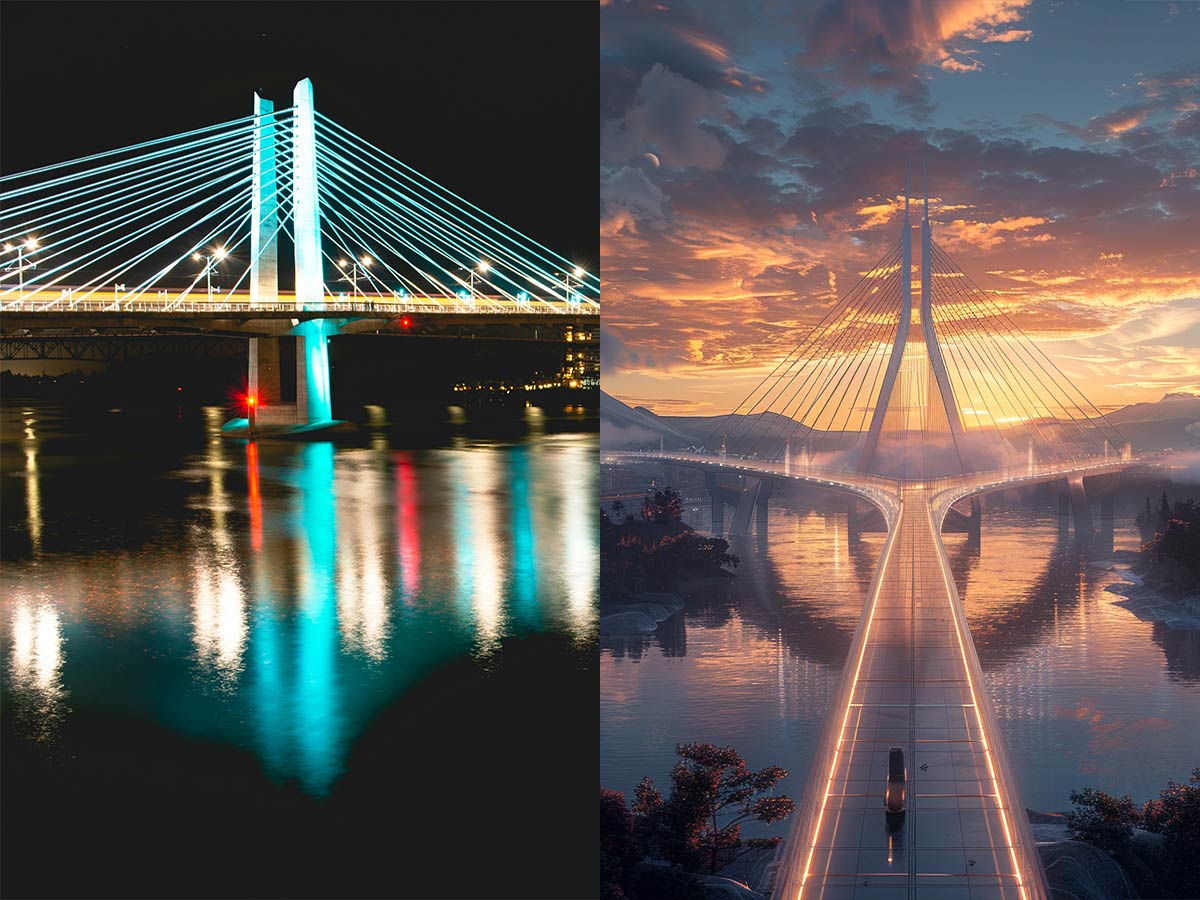
The Tilikum Crossing, a cable-stayed marvel spanning the Willamette River in Portland, Oregon, has already carved its niche as a car-free haven for public transit, cyclists, and pedestrians. But as technology and urban planning evolve, this innovative bridge could see some exciting transformations in the coming years.
For one, the bridge could become a testing ground for innovative personal rapid transit systems. These small, autonomous pods could provide a convenient and on-demand way to travel across the river. Additionally, we could see improved lighting operated by sustainable energy sources, improving traffic visibility.
The Shinkansen
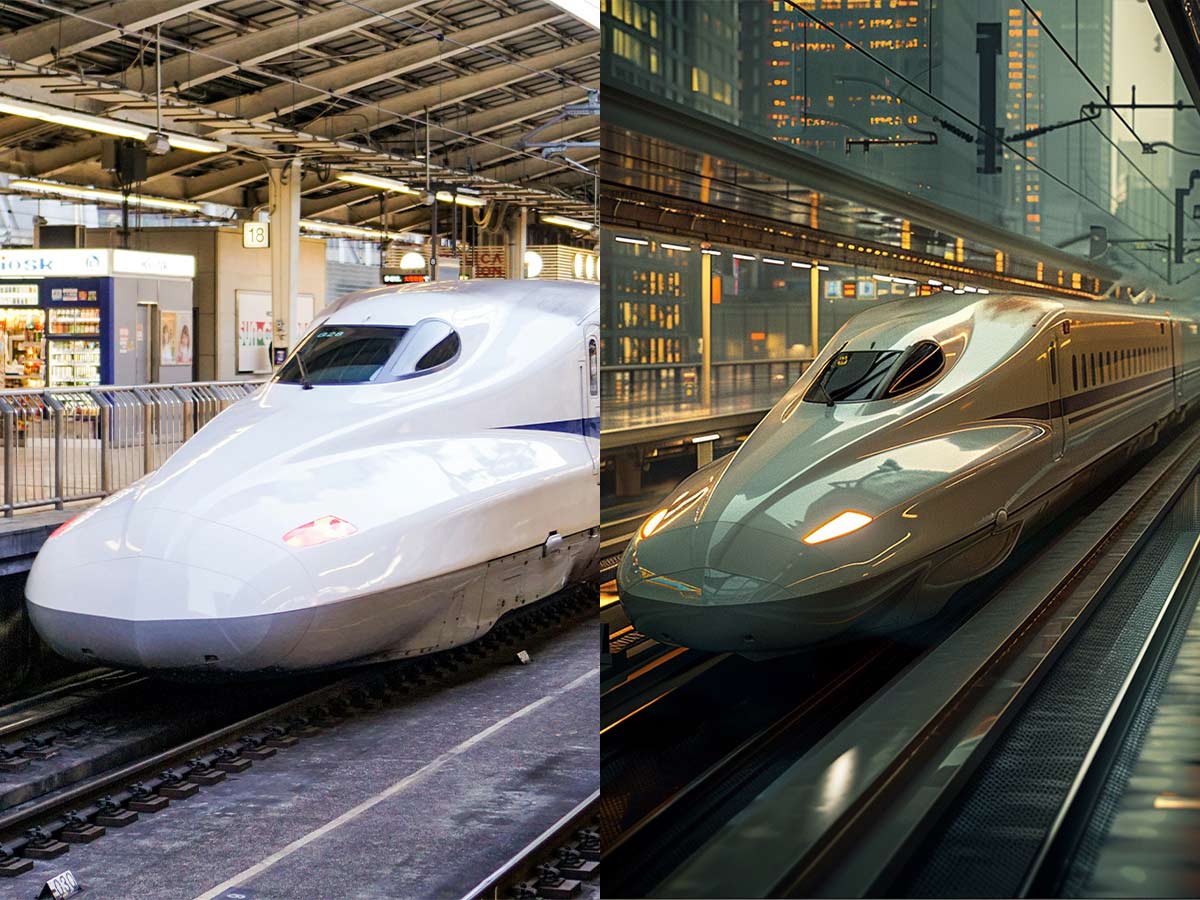
The Shinkansen, Japan's iconic bullet train, has been a marvel of engineering for decades. Fast forward 100 or 200 years and even the Shinkansen could see some mind-blowing upgrades.
The Shinkansen of the future could be an orchestra of artificial intelligence. AI systems could monitor and optimize every aspect of the network, from predictive maintenance to real-time route adjustments based on weather or passenger traffic. Imagine trains with the ability to self-diagnose and repair minor issues, minimizing delays and disruptions.
Tay Rail Bridge

The Tay Rail Bridge in Scotland, completed in 1878, was rebuilt twice after partial collapses. That being said, it will likely need to be rebuilt again, particularly to meet the demands of modern technology.
Currently used for trains, the Tay Rail Bridge of the future might be transformed into a hyperloop for highspeed transportation, carrying both freight and passengers across the Firth of Tay.
Jiaozhou Bay Bridge

The Jiaozhou Bay Bridge, a colossus of steel and concrete, stretches across China's eastern coast. Completed in 2011, it holds the record for the world's longest sea-spanning bridge, stretching 26.7 kilometers in length.
In 100 years, the Jiaozhou Bay Bridge might be cloaked in a shimmering coat of solar panels, generating its own clean energy. We might see dedicated lanes for autonomous vehicles or sections of the bridge that convert to adapt to rising sea levels.
Autobahn

Germany's Autobahn, a symbol of speed and efficiency, could undergo a fascinating transformation in the future. Imagine dedicated lanes for high-speed electric vehicles and autonomous pods built above the existing roadway.
These elevated lanes, potentially constructed using lightweight and sustainable materials, would allow for increased capacity and faster travel times. The existing ground-level lanes could cater to slower-moving traffic like trucks and regular cars.
Tianmen Mountain Winding Road
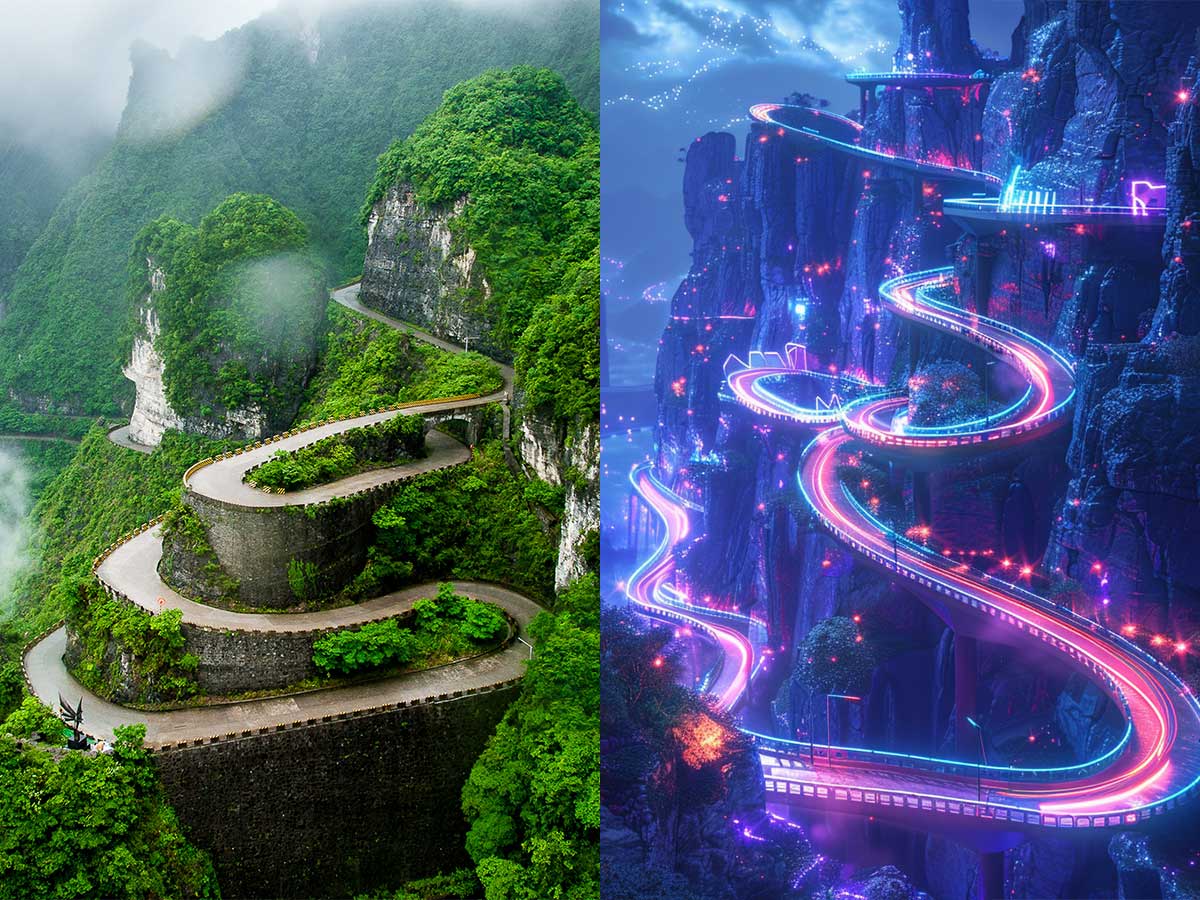
The Tianmen Mountain Winding Road in China is a marvel of engineering, snaking its way up a majestic mountain with 99 sharp turns. Nicknamed the "Heaven's Ladder," this 11-kilometer road ascends a staggering 1,100 meters, offering breathtaking panoramas of the surrounding mountains and valleys.
The hair-raising switchbacks of Tianmen Mountain Winding Road might soon feature innovative safety features. Perhaps a sophisticated driver-assistance system integrated into the roadway itself will provide real-time warnings and route optimization for both human-driven and autonomous vehicles navigating the challenging climbs.
Champs-Élysées
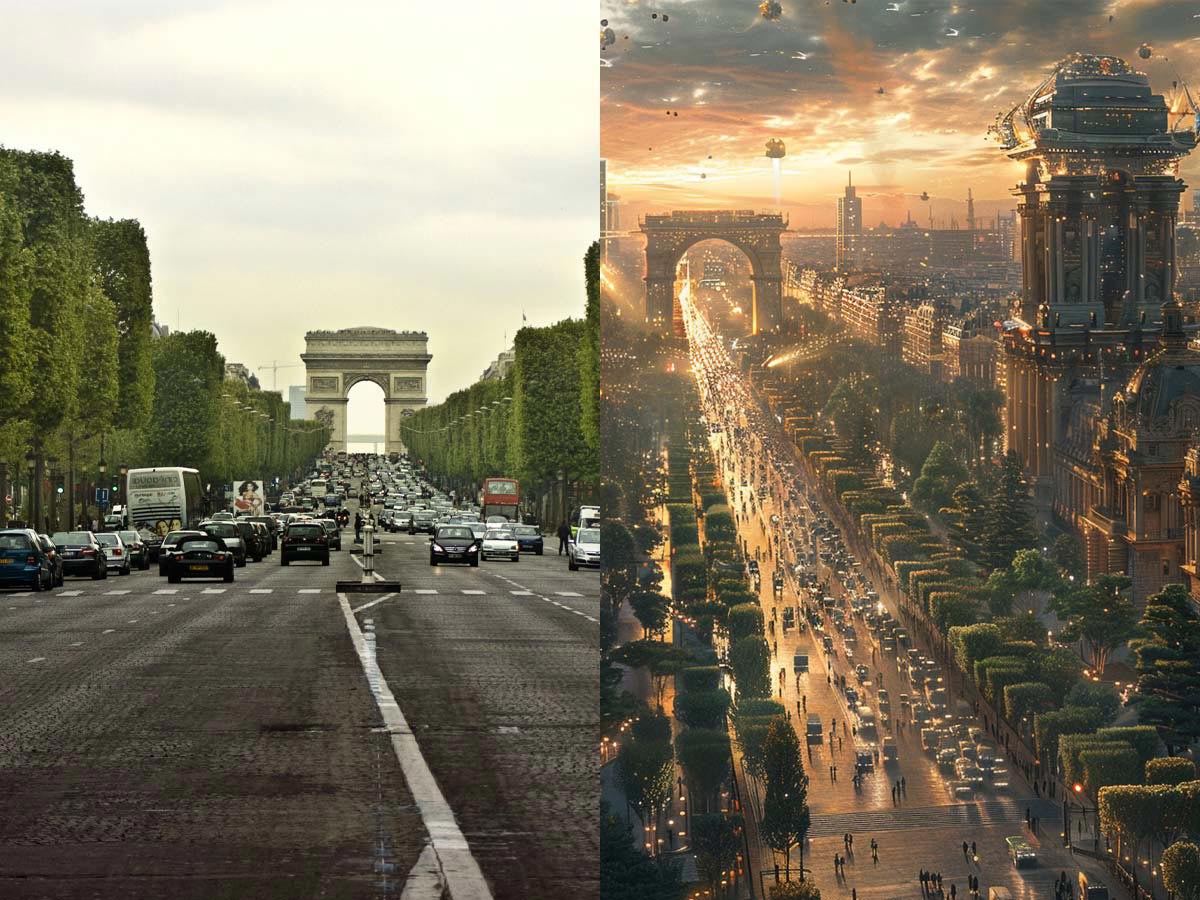
The most famous tree-lined avenue in the heart of Paris, France, Champs-Élysées, is over a mile long, starting at the Place de la Concorde and ending at the Arc de Triomphe.
In 100 years, the Champs-Élysées could be a model of sustainable urban design. Perhaps self-driving pods and electric buses navigate the avenue, reducing traffic congestion and emissions? And maybe even some modern upgrades to its iconic arches.
Viaduc de Millau

Soaring high above the Tarn Valley in France, the Millau Viaduct is a cable-stayed giant. Completed in 2004, it held the title of the world's tallest bridge for over a decade, with its slender piers reaching an impressive 343 meters.
A century from now, the Millau Viaduct might sport a futuristic makeover. Its sleek surface could be embedded with kinetic energy tiles, harnessing wind and vibrations to power the bridge itself. Perhaps we’ll even see self-driving pods gliding along dedicated lanes.
 Author
James Stephens
Last Updated: October 21, 2025
Author
James Stephens
Last Updated: October 21, 2025